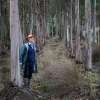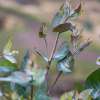
Shelterbelts: How are they contributing to farm systems?
Posted 13 May 2024
Managing trees On-farm benefits Tree Alliance
Shelterbelts – strips of vegetation between paddocks and fields – play an important role on farms. They provide shelter and shade, as well as biodiversity benefits such as habitat, food and dispersion corridors for native animal species. Shelterbelts can also play a beneficial role in a farm’s carbon neutrality, productivity level and natural capital.
Weather protection and shelterbelts
A well-designed shelterbelt is an effective tool in protecting livestock, pasture and cropping areas against the impacts of wind, rain and extreme heat. In doing so, they can help to increase farm productivity.
Anthony O’Grady, Senior Research Officer at CSIRO, discusses the role and benefits of shelterbelts on farm systems, and why they are becoming increasingly important.
"The most important thing about shelterbelts is providing shade and shelter for stock or crops," says Anthony, "they can alter microclimates and reduce stress on animals or the production system.
"In the Tasmanian Midlands, we’re seeing an increase in the number of hot days, so that shade can help to lower the thermal comfort of animals. Similarly, they provide shelter from cold winds.
'Shelterbelts buffer extreme climates, which will become more important because the number of heat stress days are likely to increase in the future.
"Less stress on animals means higher survival rates and better weight gain," says Anthony, "and evidence suggests that you’ll get an increase in pasture productivity from the shelter provided by the shelterbelts.
"That can completely offset the loss of pasture associated with the conversion of land from pasture to shelterbelt, so planting shelterbelts should be seen as an investment instead of a cost."
Carbon neutrality and market access
It’s not only an increase in farm productivity that shelterbelts can provide; the carbon sequestration functions of shelterbelt trees are increasingly important in modern markets seeking environmentally conscious supply chains.
"The larger extent of shelterbelts on your property, the more carbon you’re likely to sequester", says Anthony, "and that’s going to be really important as markets are pushing for carbon neutrality in their products.
"That push is more than just a commercial decision, it’s about retaining market access. It will be an increasingly important component of decision making into the future.
"Shelterbelts should be part of a suite of management actions that farmers employ to start reducing emissions associated with production, and helping them push towards carbon neutrality and increased biodiversity,’ says Anthony, "it won’t get them all the way, but it’s one of the levers they will have to pull."
Building natural capital
There are multiple benefits of shelterbelt plantings, but realising them does not need to take decades. As plantations mature, landholders will soon be able to see the shelter, shade and biodiversity benefits – as well as increasing the amenity of the property.
"Shelterbelts build natural capital on farms," says Anthony, "from carbon sequestration, biodiversity, pollination, wood production. There’s a whole range of ecosystem services that shelterbelts provide.
"The benefits of shade and shelter emerge within a few years," says Anthony, "that’s in contrast to the perception that you won’t see a return for many years.
"But it’s also about the wellbeing of the families that operate these farms. Farms with trees look better, so they’re likely to increase the land value and improve the amenity of the property," says Anthony, "if the primary objective is increasing amenity, improving biodiversity, and leaving a legacy for the future, planting diverse and native species is going to be particularly important.
"Trees are an investment on the land. You might lose a few hectares of pasture to a shelterbelt, but the benefits more than offset that."

Creating habitat and landscape linkages
Shelterbelts not only provide economic and productivity benefits to farms; they are also key to improving on-farm biodiversity and helping native fauna species to move across a fragmented farming landscape.
Pierre Defourny, Midlands Conservation Partnership Coordinator at the Tasmanian Land Conservancy, explains how shelterbelts supports biodiversity and habitat connectivity.
"On Midlands farms, a large extent of the original native vegetation cover has been cleared," says Pierre, "the remnant patches are often few and far apart. Creating wildlife corridors or stepping stones between these remnant patches, at a distance native Tasmanian species can cross, is very important for their conservation.
"Creating wide, complex shelterbelts with multiple native species of trees, shrubs and grasses provides food and habitat for small mammals, birds and insects.
"By supporting this wildlife, shelterbelts can provide ecosystem benefits to farms, such as pollination and pest control."
For resources and advice about establishing and managing trees on your property, contact Pierre Defourny at pdefourny@tasland.org.au.
For resources and advice about establishing and managing trees on your property, visit treealliance.com.au or contact Private Forest Tasmania’s free hotline 1300 661 009






